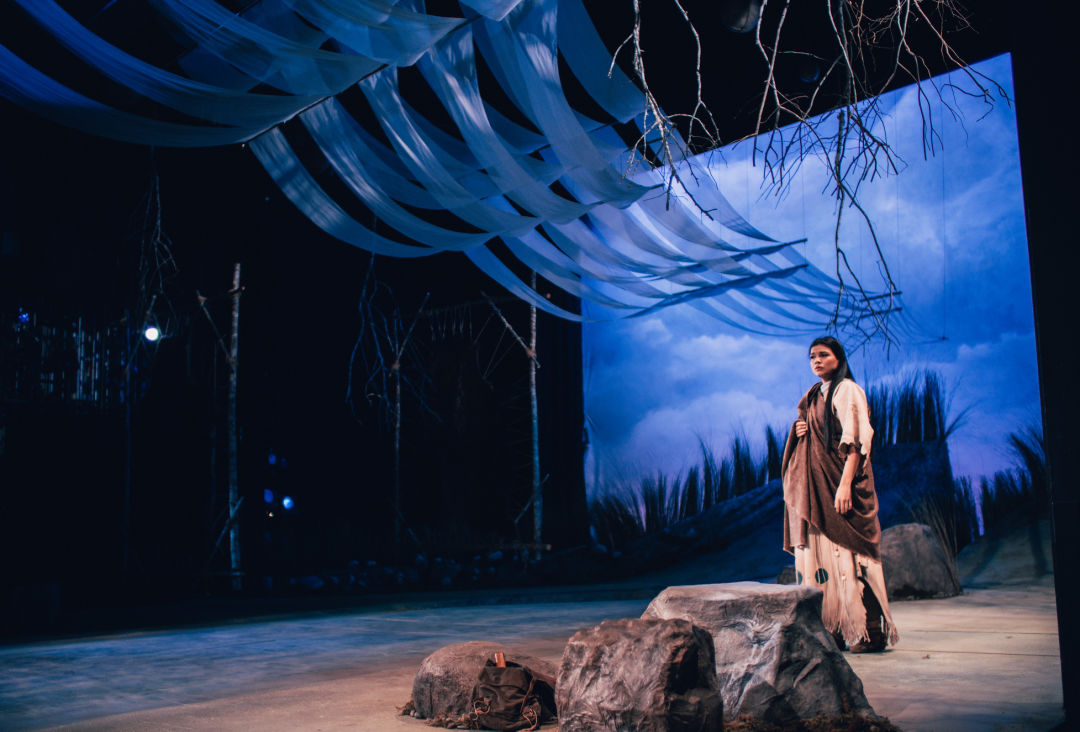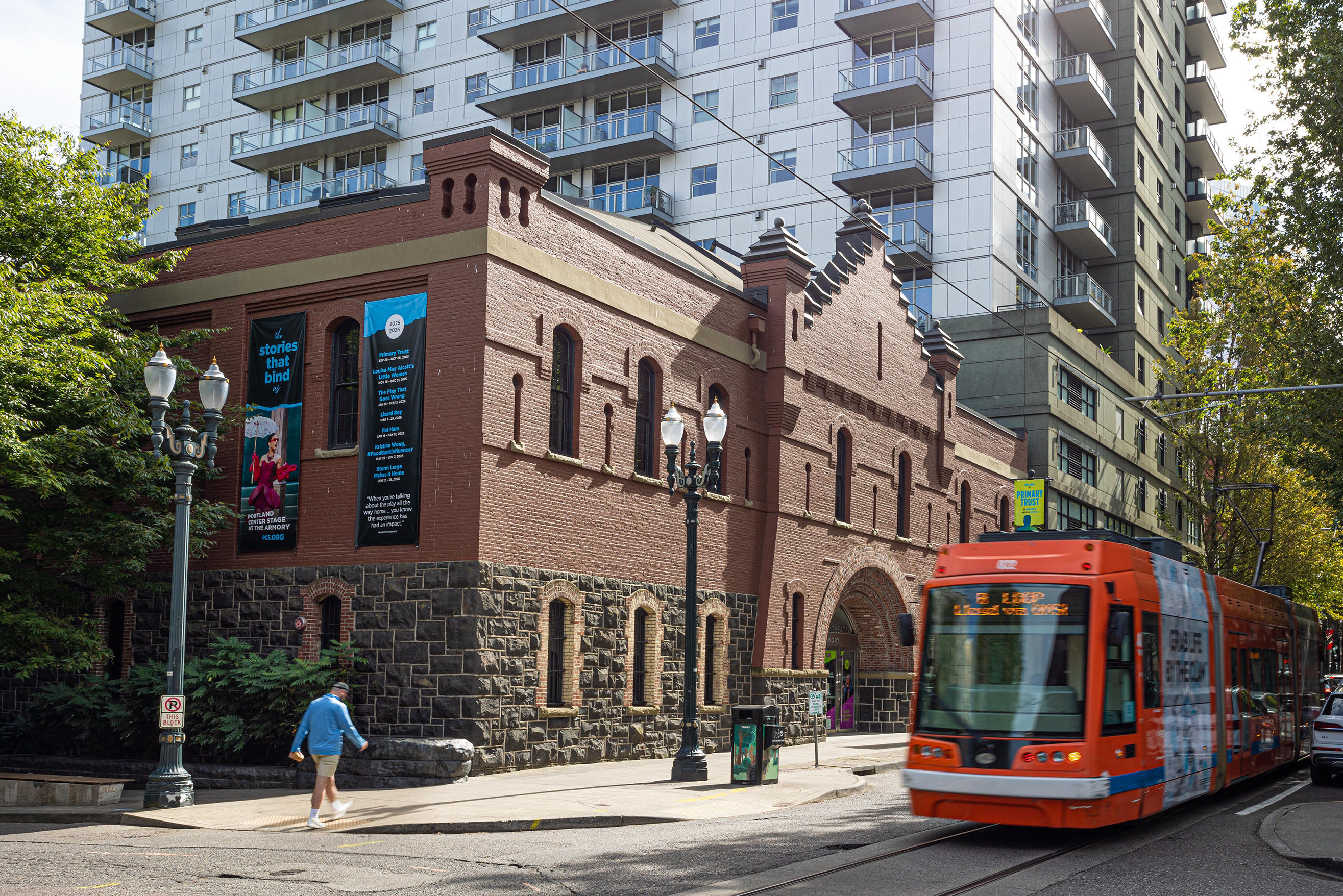A New Play Draws a Line Between Sacagawea and Standing Rock

Nathalie Standingcloud in Crossing Mnisose at Portland Center Stage
Mary Kathryn Nagle is a force to be reckoned with.
In her day job as an attorney, Nagle, an enrolled citizen of the Cherokee Nation, is a fierce advocate for Native American rights. In 2013, she filed an amicus brief in the Supreme Court case Adoptive Couple v. Baby Girl (commonly referred to as the “Baby Veronica” case), which examined the reach of the Indian Child Welfare Act.
Nagle is also a playwright: last year, the Oregon Shakespeare Festival presented the world premiere of her play Manahatta, which drew parallels between the forced removal of the Lenape people from their homeland in the 1600s and the 2008 financial crash that drove millions of Americans out of their homes.
Now she’s bringing her talents to Portland Center Stage for a brand-new play called Crossing Mnisose, directed by Molly Smith. As in Manahatta, actors play two roles: one in the past, one in the present. In this case, Nagle connects the story of Sacagawea to the current struggles of the Lakota and Dakota Nations at Standing Rock. What ties past and present is a river: what’s marked on our maps as the Missouri, but what indigenous populations call the Mnisose.
“In the 1800s, the Army Corps of Discovery came through on a mission to conquer the river,” explains Nagle. “That’s kind of what the Army Corps of Engineers did with the Dakota Access Pipeline. You’ve got a department in the United States seeing the river, which has been very significant to numerous tribal nations, as a place for colonial conquest, and I think that needs to be unpacked.”
PCS commissioned Nagle to craft a story relevant to the Pacific Northwest, and she landed on the mythology surrounding Lewis and Clark. As a lawyer, she represents the National Indigenous Women’s Resource Center, and she felt compelled to expose the violence that Sacagawea endured at the hands of expedition member Toussaint Charbonneau. She hopes her play compels audiences to revisit their perceptions of the expedition.
While PCS has actively sought engagement with Native American artists (last season featured DeLanna Studi’s And So We Walked, a one-woman play about the Trail of Tears), Nagle is disheartened by the general lack of Native representation in American theater. “Portland Center Stage and Oregon Shakespeare Festival are in the top one percent in terms of theaters that actually open their doors and stage to Native artists,” she says. “Most theaters do not and have not.”
As a partner at Pipestem Law Firm in Tulsa, Oklahoma, Nagle finds her playwriting heavily influenced by her legal work. “To me, it’s no accident that our inherent jurisdiction of our tribal nations has been taken away, at this time [when] most theaters have never produced a single play by a Native playwright,” Nagle says. “Until people see us as humans, they’re not going to see our governments as human institutions.”
Nagle also serves as executive director for the Yale Indigenous Performing Arts Program, where she helps young artists get their voices heard, with the goal of breaking down stereotypes. “Americans don’t really want to relate to or understand contemporary Native people,” she says. “They’re fine having this romantic Disney image of Pocahontas or Sacagawea. One of the biggest challenges is to deconstruct that false image and actually get true portrayal out there. The more we can get content produced by Native writers, the more we’ll start to solve that problem.”
Crossing Mnisose
Apr 13–May 5, The Armory, $25–70




